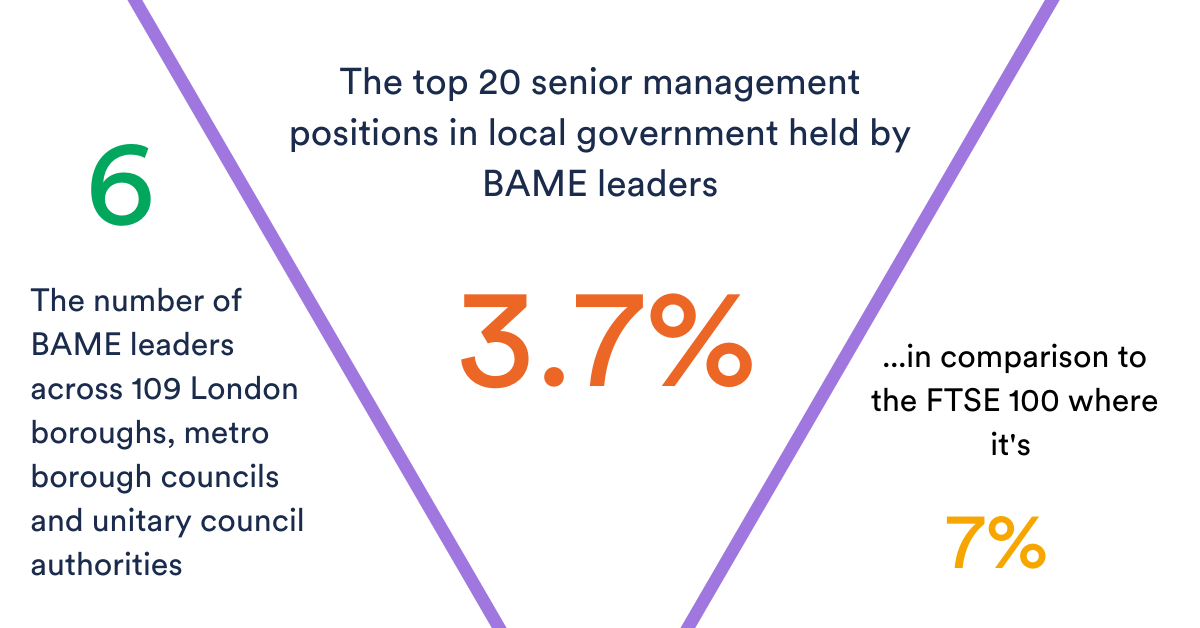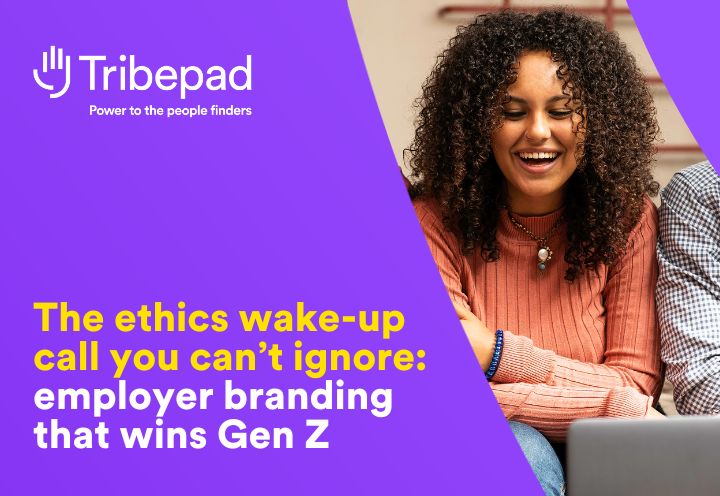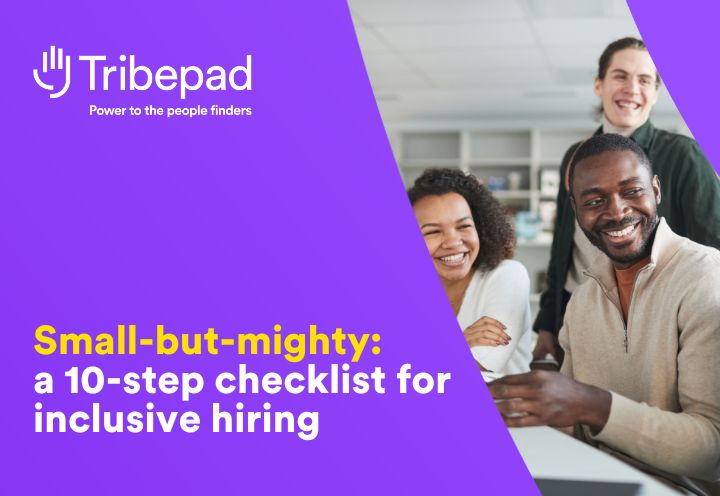Improving equality, diversity and inclusion in the workplace is a major priority for every employer, across both the public and private sector. But for local government, ED&I matters even more.
For local government, workplace diversity isn’t important only because – as the LGA put it – “everyone should have a right to equal access to employment and […] equal pay and equal access to training and development”.
It’s important because local councils are the major mechanism that impact how our communities function. Improving workplace ED&I in local authorities means building workforces that are better placed to support and serve the people they represent.
In other words:
Improving workforce ED&I in local authorities is a major mechanism for creating a more equal, diverse and inclusive society that works better for everyone.
The representation gap in local council hurts our communities
If groups or demographics are excluded from local authority workforces, they’re almost certainly excluded from decision-making that impacts them (despite best intentions).
Even where local authorities are taking the right actions, lack of representation is a major barrier.
For instance, say you regularly consult with diverse and under-represented communities, hoping to better understand their priorities and challenges.
But many marginalised communities have a history of feeling ignored or betrayed by authority, so there’s an inherent lack of trust and engagement. If the people leading your forums aren’t representative, those barriers are difficult to overcome – and they hamper the honest, vulnerable conversations that drive real change.
Plus, poor workforce representation (and inclusion, to empower diverse voices to make an impact) means actions might be prioritised that unintentionally don’t serve the best interests of certain communities. Especially if those voices aren’t being elevated into senior positions where they have influence.
In London, where 40.2% of the population identify as Black, Asian and minority ethnicity (B.A.M.E.), there are only 6 B.A.M.E. leaders across 109 London boroughs, metro borough councils and unitary council authorities. (Source).
Across the top 20 senior management positions in local government organisations, just 3.7% are held by B.A.M.E. leaders, compared to 7% in the FTSE 100. (Source).

As Ted Cantle, chair of the Institute of Community Cohesion Foundation, says, “It’s hard to be truly diverse within local government’s current slightly paternalistic approach of top-down service delivery”.
That’s a vicious cycle that ultimately risks diverse and underrepresented communities becoming distrustful and disengaged. Making change even harder to achieve.
So… what can you actually do?
The onus for ED&I momentum is on local authority recruiters
Building more equal, diverse and inclusive workforces is everyone’s responsibility:
- Recruitment, bringing more diverse people into the organisation
- Line managers, empowering diverse voices to thrive
- Colleagues, calling out microaggressions and creating an inclusive culture
- HR, building succession pipelines that elevate diverse employees
But the chain starts with recruitment. If we’re not bringing those diverse voices into the organisation, we fall at the first hurdle.
In practice, that means three priorities.
1 – Attracting more diverse people to apply
Being proactive about approaching under-represented communities. Reaching out, not waiting for more diverse applicants to come to you.
Key questions:
- Where do you advertise roles and what are the audience demographics? Are the right people even seeing your adverts?
- How much work do you do to counteract negative perceptions, for example with ED&I focussed campaigns? Does your employer brand support your recruitment efforts?
- How inclusive is the language in your job adverts? Are you putting off potential applicants before you even get started?
- How accessible is your careers site and recruitment process? Or are you unintentionally excluding people from the outset?
2 – Interviewing and hiring more diverse people
Making sure you’re not ruling out qualified applicants on the basis of irrelevant information. Committing to weeding out unconscious bias and unintentional exclusion, building a recruitment process that’s truly fair and inclusive.
Key questions:
- Where are your crucial drop-off points for diverse and underrepresented applicants? Where are your focus points for action?
- How could your interview processes be more inclusive? For example, what if candidates can’t easily travel, can’t easily afford time off or travel expenses or can’t secure childcare?
- Do you have a systematic, organised way to understand trends and make corrections? Do you have the data to support that approach?
3 – Retaining more diverse people
Committing to elevating the voices of the people you hire. Recognising where diverse and under-represented hires might need different support to thrive, and ultimately to progress into senior decision-making positions where they can better guide the organisation’s thinking.
Key questions:
- What different challenges might under-represented groups face when joining you? How can you better meet their needs during onboarding and beyond?
- How easily can you identify problems that undermine your ED&I efforts, like B.A.M.E. or LGBTQ+ turnover? And how easily can you solve them?
- How could your diverse employees help you recruit more diverse employees? How are you elevating diverse voices to make recruitment fairer and more inclusive?
These are the critical ED&I questions recruiters in local authorities must be asking, both of themselves and of the recruitment software they choose to support them.
The truth is, the best intentions amount to little if your recruitment technology stalls progress. And maybe it’s cliché but ‘good enough’ isn’t good enough anymore. If improving ED&I for local authorities is a priority – to build a workforce that better represents the people you serve – you need recruitment software that aligns.
Some challenges to your current technology:
- Does your applicant tracking system support anonymous applications, to eliminate unconscious bias?
- Is your career site and recruitment platform compliant to the highest accessibility standards?
- Do you offer multi-language recruitment, interviewing and support, for candidates whose first language isn’t English?
- Does your software allow you to reach into and build talent pools around under-represented communities?
- Do you have employee referrals functionality, to amplify the impact of your existing diverse hires?
- Can you prioritise diversity hiring, including filtering and prioritising applications from under-represented backgrounds?
- Does your software offer comprehensive diversity reporting, so you can get real-time up-to-date data, analyse trends and refine your priorities?
- Can you easily issue diversity questionnaires, to better understand your applicants’, candidates’ and new hires’ experiences?
- Can you easily collect information about protected characteristics, to feed into better reporting and more inclusive workforce practices?
- Do you have onboarding functionality that can be completely bespoke to different hires, to provide different support where it’s needed?
If you’re looking at that list and feeling your current recruitment tech lets you down on the ED&I front, it’s worth having a chat.
Tribepad is an approved G-Cloud 12 supplier and we’re already helping a good number of local councils achieve excellent momentum on ED&I. For example, Coventry City Council have seen an 122% increase in B.A.M.E. candidates since using Tribepad (from 18% to 40%).
We’d love to help you progress your ED&I action plan. Learn more about Tribepad for local authorities here.



